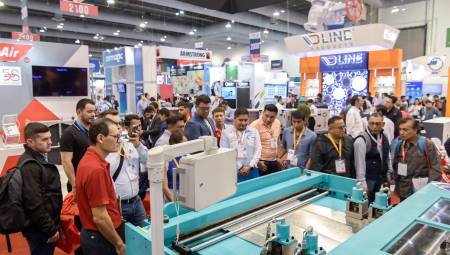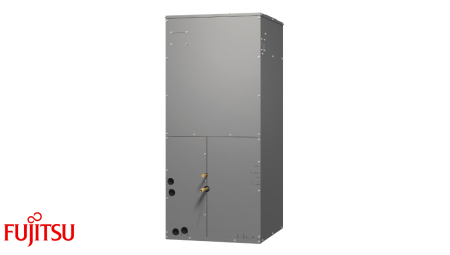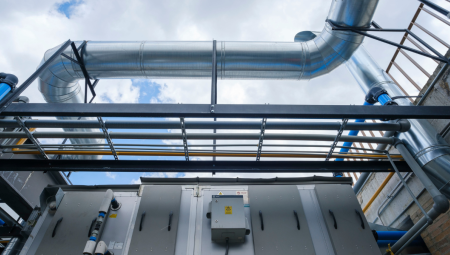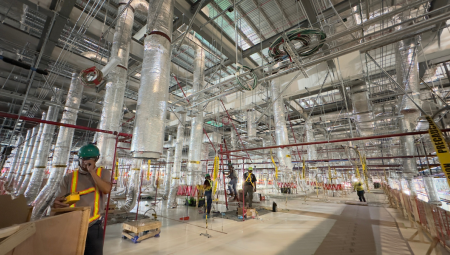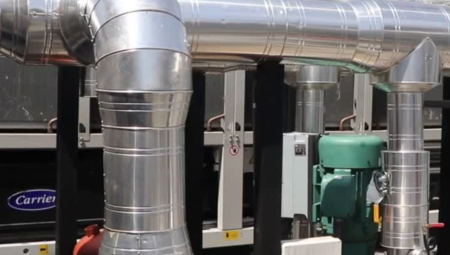 From the first phases of an air conditioning project, attention should be paid to sound insulation, as this will allow better noise control in the final result of the installation.
From the first phases of an air conditioning project, attention should be paid to sound insulation, as this will allow better noise control in the final result of the installation.
by Carlos A. Otálvaro*
In construction projects, in addition to the needs that can be called fundamental, it is necessary to pay special attention to the acoustic and noise transmission conditions, which requires a correct conception of the project to define the efficient acoustic specifications for the functionality of the spaces and the comfort of their users.
In an air conditioning installation, the noise and vibrations generated by the equipment and the turbulence caused by the flow of air circulating through the distribution network, can generate sound levels that affect the comfort of the users of the spaces.
An adequate result will be had if the sound insulation has been properly planned and integrated in the early phases of a project. For noise control every detail is important and will positively influence the final noise level. A good acoustic specification should take into account the multiple factors corresponding to the project.
Normativity and acoustic criteria
International regulations define the acoustic conditions referring to this type of facilities, this time we cite current regulations in Spain.
- RITE: (Regulation on Thermal Installations of Buildings) Article 11 paragraph 4: Quality of the acoustic environment: under normal conditions of use, the risk of discomfort or disease caused by noise and vibration of thermal installations shall be limited.
- IT 1.1.4.4 Requirement of quality of the acoustic environment (Technical Instruction of the RITE): The thermal installations of the buildings must comply with the requirements of the Basic Document HR Protection against noise of the Technical Building Code, which affect them.
- Technical Building Code Basic Document HR of noise protection 3.3.3.2 Air Conditioning: "Air conditioning ducts must be acoustic absorbent when the installation requires it and specific silencers must be used."
- UNE Standard 100713: Air Conditioning Installations in Hospitals: Section 5.3 By means of the appropriate constructive measures, it must be avoided that, due to the sound power generated in the air conditioning installation, sound pressure levels higher than those defined therein are produced.
These standards are framed in the international acoustic criteria of comfort. These define the appropriate ranges for the different types of enclosures according to their use (functionality and demand). The most applicable are the NC (Noise Criteria) and RC (Room Criteria), as they take into account the inclusion of air conditioning and heating conduction systems.
NC Comfort Criterion
It is the criterion of acoustic comfort par excellence. NC curves were defined by Leo Beranek in 1957.
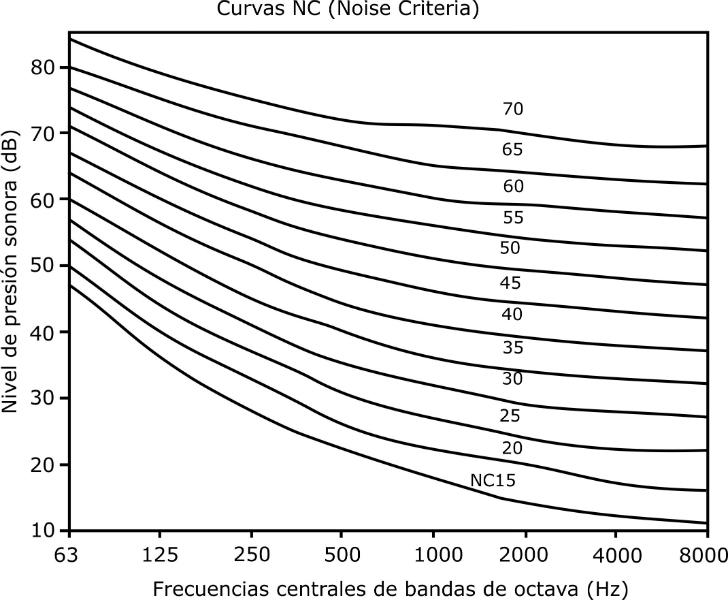
RC criterion
Developed by Warren Blazier, for ASHRAE* in 1981, it is primarily used for the design of air conditioning and heating systems. In 1997 it was updated (RC Mark II*) including the vibration classification and the quality assessment index (QAI) used for subjective noise estimation.
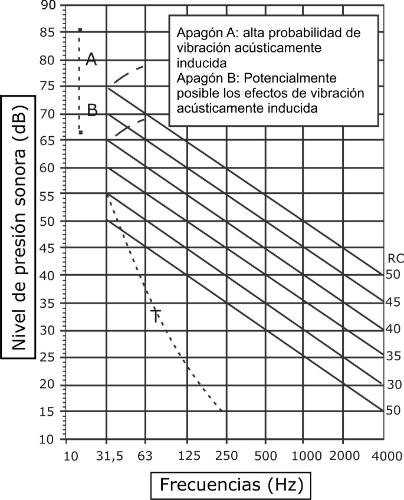
* BLAZIER W.E. "RC Mark II: A Refined Procedure for Rating the Noise of Heating, Ventilating and Air-conditioning (HVAC) Systems in Buildings" J. Noise Control Enginering, 45(6), Nov - Dec 243- 250. 1997
Input parameters
To carry out an adequate diagnosis and a correct specification of the acoustic solutions, it is necessary to know specific information corresponding to data that the manufacturers and suppliers of the equipment must provide.
- Type of source and spectrum(s) of noise generated.
- The sound absorption coefficients of absorbent products used in ventilation and air conditioning ducts. ("ASTM 423 test and NRC value of the material").
- The attenuation of prefabricated ducts, expressed as insertion loss (ΔL), and the total attenuation of silencers that are embedded in facades or other construction elements.
- The damping coefficient, static deflection, transmissibility, and maximum load of anti-vibration systems used in the insulation of machinery and ducts.
Sources
The classification of the different types of noise generated in an air conditioning installation in the design phase is necessary for the proposal of control measures.
On the type of noise generated, the generation of aerial noise and structural noise must be clearly differentiated, since their treatment will be different:
- Aerial noise: transmission in the air (for example, noise generated by the blades of a fan). We will treat it with absorbent materials in Glass Wool.
- Structural Noise: it is transmitted through the solid medium and dissipates in the aerial medium and must be treated with damping systems (anti-vibration, floating slabs) that control the transmission via solid solid.
Ducts and terminal elements
Ducts made of hard, smooth and rigid materials are not absorbent and the grids or terminal elements of an air conditioning system can be sources of noise generation, produced by variations in the speed and direction of air flow.
In the design of the air system, the characteristics of the distribution network must be studied, taking into account the noise generated by places such as the following:
- Straight sections.
- Terminal elements such as grids and diffusers outputs.
- Other sources of noise.
The levels generated by these systems must be reported by the manufacturers. They can also be estimated from some mathematical expressions, using data measured under controlled conditions of material properties.
Noise control in air conditioning ducts
Sound absorption is an acoustic property of materials and corresponds to their ability to absorb sound energy and control reverberation, the greater the porosity of the material, the better absorption it will have. This is defined by the sound absorption coefficient and is obtained by acoustic measurement in a reverberant chamber according to ASTM C423 or ISO354. All FiberGlass Colombia Glass Wool ducts offer high and therefore very efficient sound absorption coefficient values.
If the inner surface of the ducts corresponds to a hard, smooth and rigid material (for example, a metal sheet, expanded polystyrene, polyurethane or polyisocyanurate), a distribution system with less attenuation capacity will be in place, which by means of acoustic reflections inside will generate resonances, leading to the amplification of the noise generated by the air conditioning equipment and possibly causing the walls of the duct to enter into vibration, thus transmitting the noise to the rest of the enclosure and to adjoining spaces.
When studying and defining the solutions and materials for noise control in an air conditioning installation, it is necessary to analyze the reduction or attenuation for each frequency band (spectrum of interest), taking special care with low frequencies, which are more difficult to control.
* Based on Technical Note Number 71 of Fiberglass Colombia S.A., published in January 2013.
Footer
* BLAZIER W.E. "RC Mark II: A Refined Procedure for Rating the Noise of Heating, Ventilating and Air-conditioning (HVAC) Systems in Buildings" J. Noise Control Enginering, 45(6), Nov - Dec 243- 250. 1997
* Carlos A. Otálvaro is the leader of air conduction and industrial insulation for the Andean Region of FiberGlass Colombia S.A.







